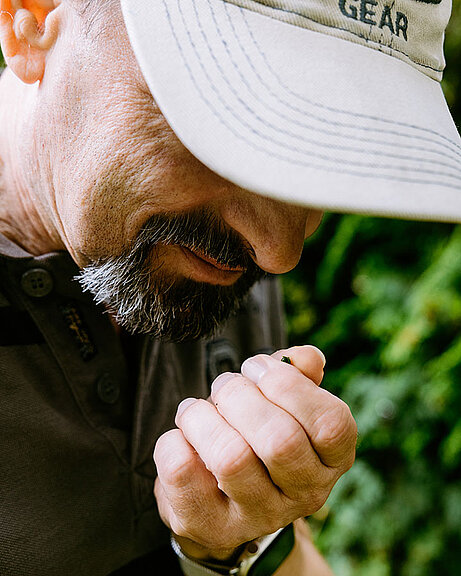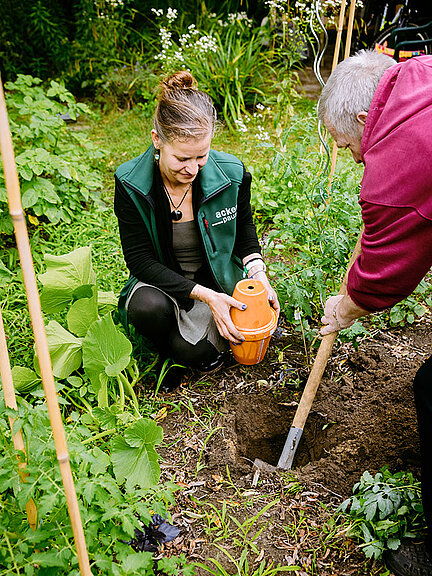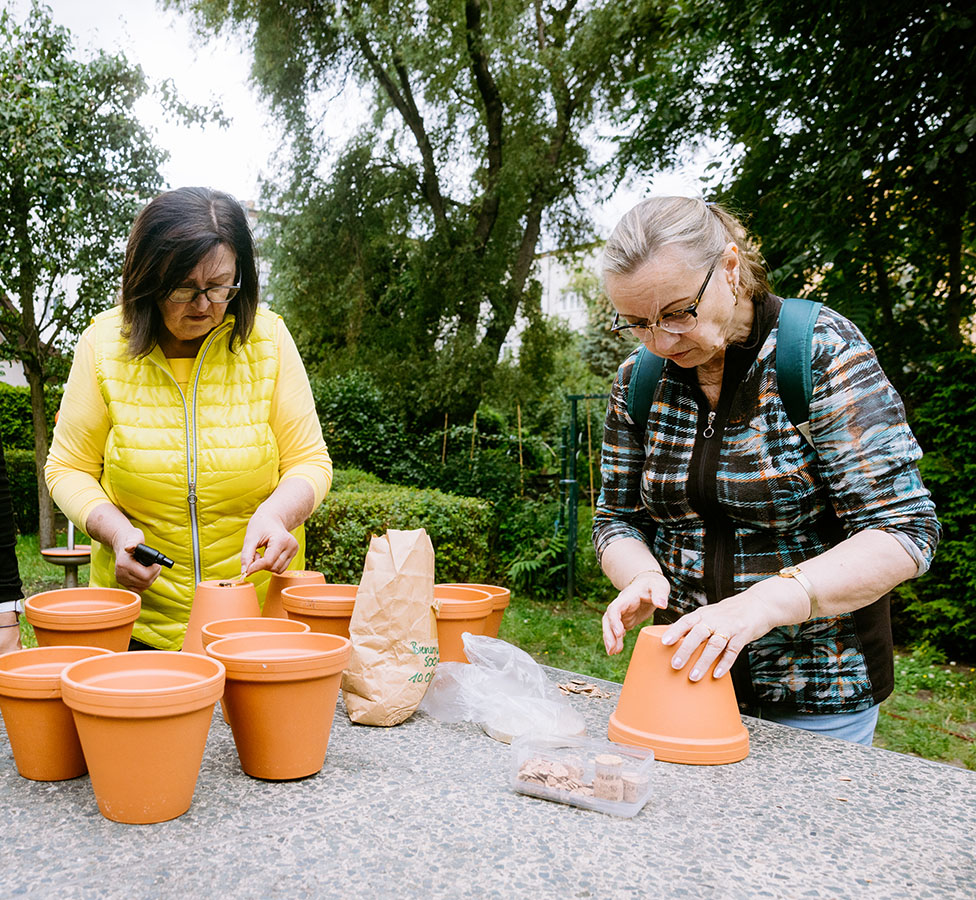Radishes and rhubarb were the first plants to be planted this year. In the meantime, lush green basil is growing next to young tomatoes in the backyard on Maximilianstrasse. Potatoes - the old blue and pink varieties - are already in the ground, as are zucchini, pumpkin, corn and beans. Everything is going according to plan, of course. A diverse field plan has been drawn up for the gardening group. "In 13 years, not even the same thing will grow here," explains Virginia Boye, who now works for Ackerpause and helps people grow their own vegetables.
In the courtyard of Maximilianstrasse in Lichtenberg, neighbors tend a vegetable garden together. During regular gardening sessions and planting workshops, participants learn a lot and get to know each other.
The joint project between HOWOGE and Ackerpause started in 2019. After the tenants on Sophienstrasse had already successfully worked in the backyard, additional areas were to be added and turned into usable areas. The benefits are obvious: a better climate in the residential area, more diversity for insects, fruit and vegetables for the residents and, last but not least, a strong sense of community. At the beginning, the volunteer gardeners will be supported by a field coach. In regular planting workshops, joint plantings in spring and summer and through a field consultation hour, the HOWOGE planting groups learn how to grow in a climate-friendly way. "At some point, Ackerpause will withdraw and the gardening group can garden alone," explains Boye in the green courtyard on Maximilianstrasse as she shares her valuable knowledge with a small group of tenants here at the beginning of July.
Like thousands of years ago
On this day, the committed tenants of HOWOGE will learn together how to build ollas - an irrigation system that is thousands of years old and saves water and replaces daily watering. Basil is also planted in the soil in a particularly water-saving way. It now grows right next to the tomatoes, where it provides more aroma in the plants. "Just like on the plate," laughs Boye. The mixed culture in the surrounding beds also has a system: the pumpkin grows next to the corn so that it can climb up on it. In return, the pumpkin plant covers and protects the corn and the bean provides valuable nitrogen in the soil. A smart trio that was already on the rise 5,000 years ago. "We are concerned with climate-friendly and water-saving gardening," says Boye. And with a healthy "work-plant balance". She knows that fresh vegetables from your own garden and time in the countryside are good for you. This also motivates the participants. And yet there is more to it for the voluntary planting community.
“Fruit and vegetables are secondary”
Marlies Rother is already retired. In 2020, she came to the field on Maximilianstrasse through an appeal in the HOWOGE tenants' newspaper. "The exchange in the residential area was important to me. The fact that I also harvest fruit and vegetables here was a minor matter for me." The Berliner comes to the bed as often as she can to have a nice chat and meet people from the neighborhood. At the moment, however, she hardly has a chance to chat: there is too much to do for too few hands. Gernot Hahn, who has had his own garden in the yard since 2010, is also involved with her. Gardening makes him happy. "What could be better than sitting in the cool greenery on hot days after work, right outside your own front door?" There is something to do every day. Michael B., who comes once or twice a week to water, knows that too. The family always had a garden, he reports. Today he is happy to share his knowledge and learn new things. For example, that weeds can be left alone because they have a use. As soon as he retires, he hopes to have more time for the community field. Until then, however, hopefully more people will come forward to help with the farming, planting, watering and harvesting. There will certainly be enough vegetables for everyone, even if that is actually only a minor matter.












